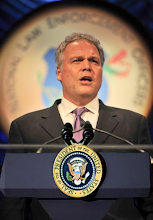The Romans built Watling Street across it; Chaucer's pilgrims going to Becket's tomb at Canterbury Cathedral passed through it.
In 1381, the Peasants' Revolt, led by Wat Tyler, was crushed here by the King. I drive down Wat Tyler Road a couple of times a week.
Many people think that the name Blackheath comes from the burial of plague victims there in the 14th century, but the name predates that event, and no plague pits are recorded there.
The church in this picture is All Saints, and it was the parish church of the Archbishop of of Canterbury's special envoy to the Middle East, Terry Waite, who was kidnapped in Lebanon. He was held captive for nearly five years, being released in 1991. He can still be seen in the area, and it's hard not to smile at him, his face is so familiar. He always smiles back.


The Paragon is an extremely imposing crescent of houses linked by enclosed cloister-like sections. It was completed in 1805. It has stunning views across the heath, and itself provides a magnificent view in return.

The Pagoda was built in 1760 for the Earl of Cardigan. I couldn't find a decent colour picture of it on Google. I think I could live there quite happily!

There is another Blackheath in Surrey, to the south-west of London. When I was at school, I had an English teacher who had an identical twin. Her sister lived in Blackheath. When my teacher came back from a stay in Canada, she made her home in the OTHER Blackheath. A rather extreme example of twin behaviour!


3 comments:
What a beautiful place and so rich with history. I guess by British standards, The Paragon is considered "new" construction!
It's true Blackheath wasn't the most bombed place in WWII, but so much of our ancient heritage was lost then. And an IRA blast some years ago vapourised the oldest church in the capital.
You live in a very cool and interesting place!
Post a Comment